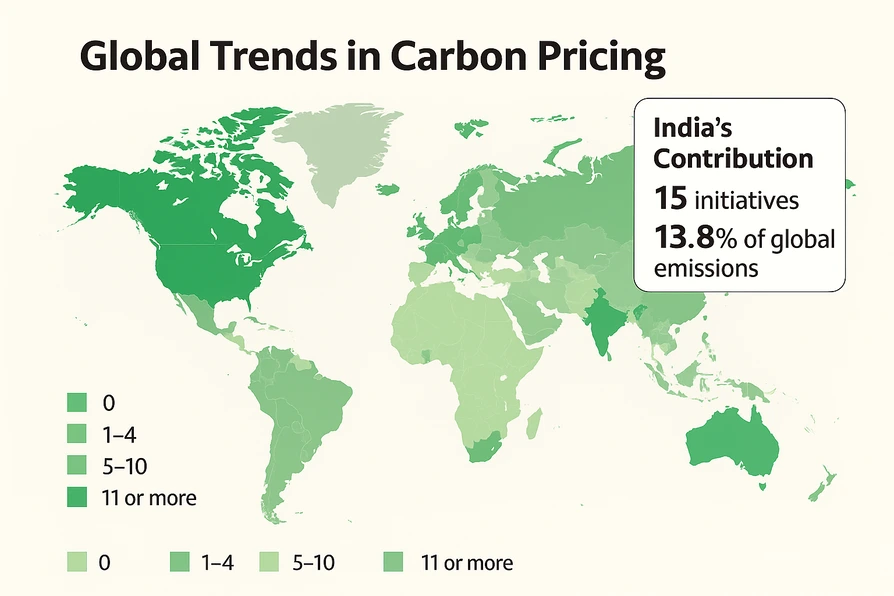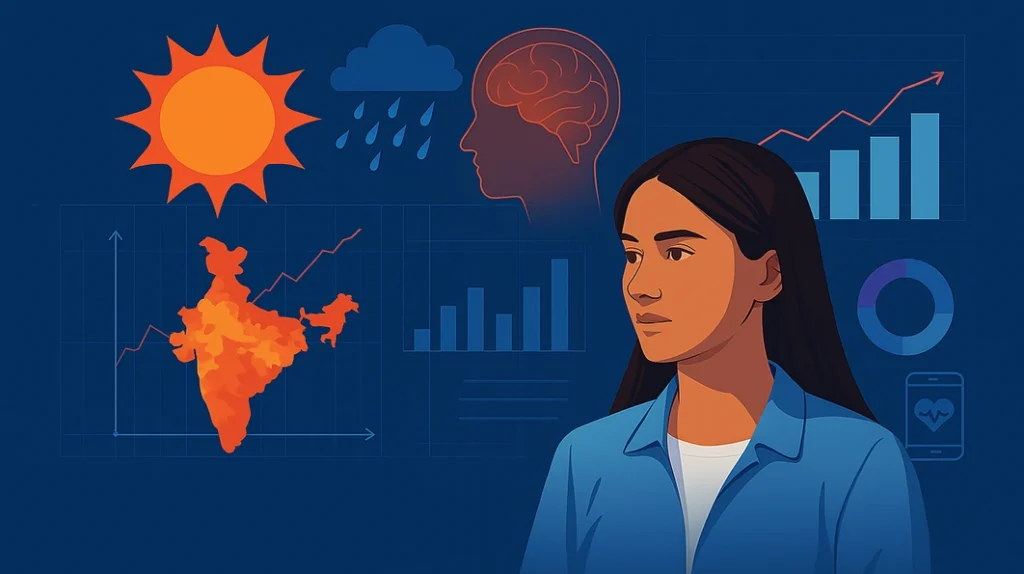New Delhi / Global – The price of carbon is quickly remodeling climate policy in 2025. With 78 systems now active worldwide, covering almost a third of global emissions, both developed and emerging economies are squeezing rules about polluters. India has advanced with volunteer markets and pilot negotiation schemes, signaling its intention to balance rapid growth with bold climate action.

What Is Carbon Pricing ?
In essence, the price of carbon is a policy tool that puts a financial cost on greenhouse gas emissions, with the aim of making polluters pay while rewarding cleaner choices.
- Carbon Tax – Applies a fixed fee per ton of emissions, creating a predictable signal.
- Emissions Trading Systems (ETS) – Governments limit total emissions and companies Trade of Permissions in a regulated market.
By 2025, carbon prices cover 28% of global emissions and 65% of world GDP. In addition to reducing emissions, it offers direct benefits to public health. Reducing coal use and industrial pollution leads to cleaner air, reducing asthma rates, heart disease and premature deaths (WHO).
India’s Carbon Credit Trading Scheme (CCTS)
India emerged as a climate leader through its carbon credit negotiation scheme (CCTS), launched in March 2025 by the Ministry of Power. This structure allows the negotiation of credits in eight approved methodologies, including green hydrogen projects, renewable energy, and aresting, aligning the long-term goal of India in Net-Zero 2070.
By cutting dependence on fossil fuels, these policies are expected to reduce health charges related to air pollution that currently causes millions of premature deaths annually in southern Asia. For public health institutions such as the Ramyanti Institute of Health Sciences (RIHS), these developments highlight the strong connection between climate policy, health equity and disease prevention.
Global Carbon Market Trends
Countries like Brazil, Türkiye and South Africa have recently joined systems established in Europe and North America, expanding the range of carbon prices.
Carbon prices vary significantly:
- Uruguay – More than $ 160 per ton of co₂e (higher globally).
- European Union ETS – Almost $ 100 per ton.
- Developing economies – Usually below $ 10 per ton.
Experts argue that increasing prices to $ 50 to $ 100 speeds in emission reductions and generates medical assistance saving by reducing pollution -oriented medical costs.
Public Health Benefits
The implications of public health of the price of carbon are profound. Clean air reduces the burden of respiratory and cardiovascular diseases, while the use of lower fossil fuels cuts exposure to toxic pollutants and extreme heat. According to the World Health Organization, air pollution continues to cause about 7 million premature deaths annually worldwide.
For health systems, reduced disease rates reduce costs, releasing resources for preventive care and community health equity programs.
Revenue and Investments in Health and Energy
In 2024 alone, carbon price revenues exceeded $ 100 billion globally. Increasingly, these funds are being reinvested in renewable energy projects, green infrastructure, clean cooking fuels and accessible public transport.
These measures offer double dividends by cutting emissions by improving public health, especially in urban centers that fight against air pollution.
Why Carbon Pricing Is a Game Changer
The price of carbon is proving more than an economic tool is a health and climate solution. This :
- It drives innovation by pushing industries to cleaner technologies.
- Improves public health, reducing dependence on fossil fuels.
- Expands transparency with carbon standardized costs.
- Increases efficiency through negotiation systems.
- Supports zero net strategies at national and corporate levels.
The Road Ahead for Businesses and Consumers
- Businesses can integrate carbon prices in investment decisions, adopt internal carbon prices, engage in voluntary markets and support policies that link revenues to clean health and energy.
- Consumers can choose climate -conscious brands, reduce personal emissions, and defend policies that offer climate action and public health benefits.
Conclusion
By 2025, carbon prices became a defining global solution in expanding coverage, raising billions of revenue and boosting clean innovation. Its greatest impact, however, may be on public health, as the cleaner air helps to reduce disease rates and health costs worldwide.
The entry of India through the carbon credit negotiation scheme shows that emerging economies can lead climate actions and safeguard human growth and health. For institutions such as RIHS, this marks a critical convergence of climate policy and health equity, where all tons of carbon also mean healthier lives.


